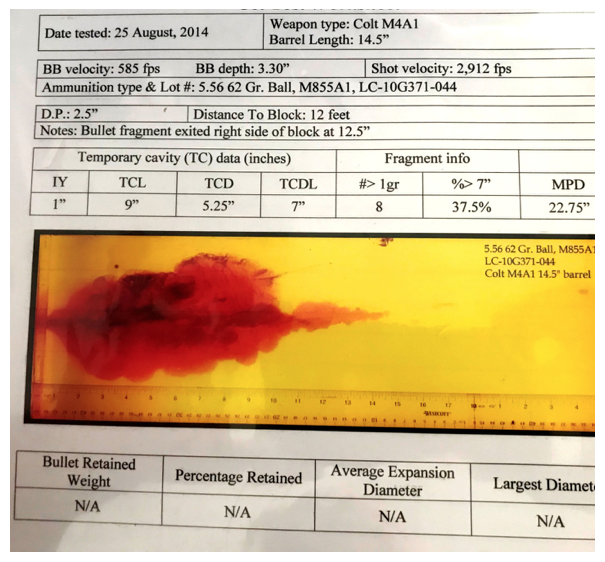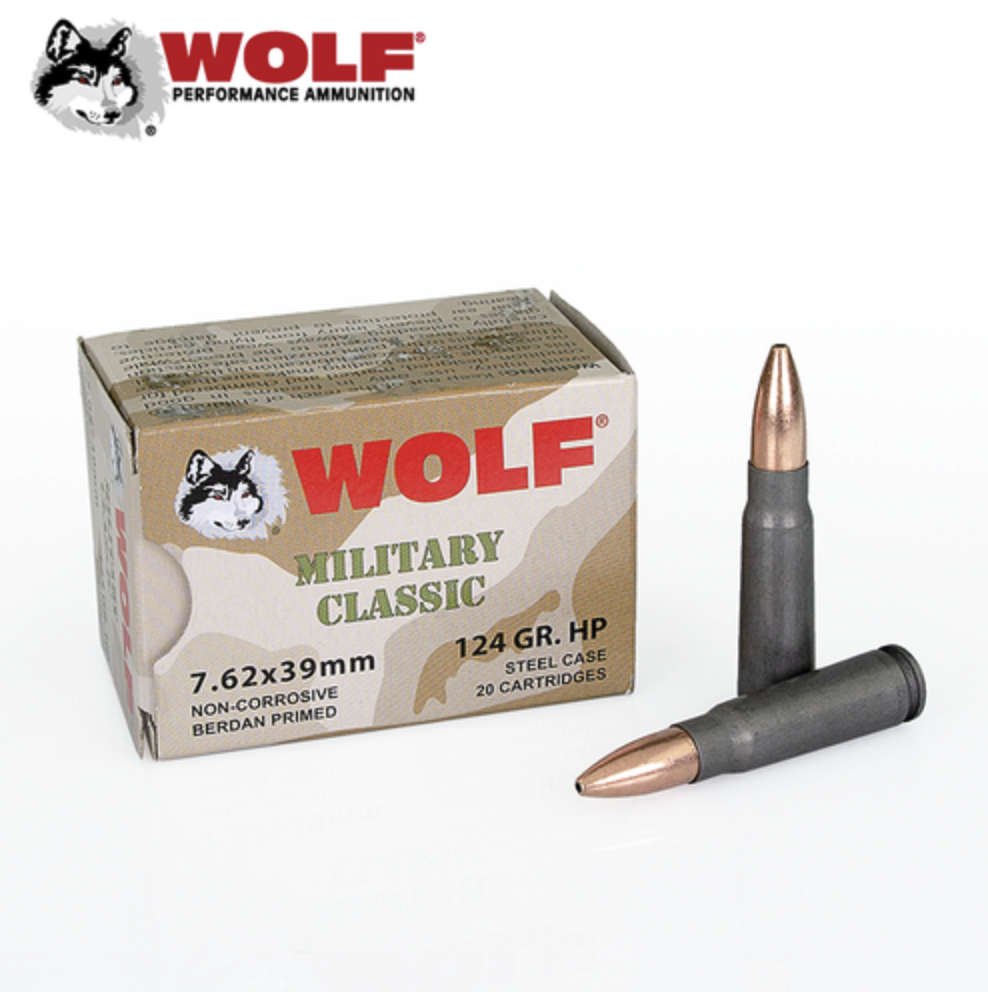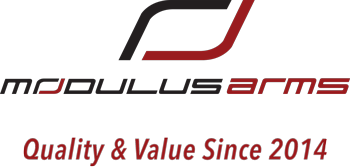Posted by Modulus Arms on 21st Sep 2021
Best AR-15 Calibers
One of the greatest things about AR style rifles is its versatility. It can be made to do everything from an accurate medium-range hunting rifle, to a compact, high-speed, low-drag, hard-hitting home defense weapon. The customizability of the AR15 rifle is mainly thanks to how long the gun has been around and how popular it has become not just in America but around the world. Just looking at the sheer amount of different ammo types the AR system gives you a good image of what roles and functions this platform is capable of — just about anything. Today we’ll look at the five most noteworthy calibers that drastically change the behavior and characteristics of the AR15 rifle.
AR Platform Background
The AR-15 was initially designed as an infantry rifle to shoot an intermediate cartridge, which is a cartridge halfway between a full-power rifle cartridge such as a 7.62 NATO, and a pistol cartridge like 9x19 Parabellum. This core design choice has stuck with the weapon even in all of its more exotic calibers throughout the years. Although AR style rifles are capable of running pistol or full-power ammunition, those guns are separated from AR-15’s with different platforms based on what types of calibers they can support such as the AR9 or AR10.
5 Best Calibers to Run In An AR15
In our opinion, the five best calibers to run in an AR15 include 5.56 NATO, .223 Remington, 7.62x39mm, 6.5 Grendel, and .300 AAC Blackout.
5.56 NATO

The 5.56 NATO round is the gold standard for the AR-15. It’s an iteration of the cartridge the original AR-15 and subsequent versions were designed for. 5.56 NATO is a .22 caliber bullet with a good amount of powder behind it as the idea was to make up for what it didn’t have in mass with velocity. In fact, the average muzzle velocity of 5.56mm is around 3,000 feet per second. Doing some simple math with the bullet’s mass in mind, this equals about 1,300 foot pounds. For reference, your femur breaks after about 900 foot pounds of energy is applied. 5.56 and .223 respectively are the most accessible and available rifle ammunition in the United States, with current prices sitting around 60 cents per round for both the 5.56 and .223 calibers.
Nerd stuff aside, the cartridge has been around for over 50 years, and much like the AR-15 itself has a veritable cornucopia of options for different powder loads, projectiles, and casings themselves to choose from, as well as surplus military ammunition such as M855 (or even M855A1 if you’re really looking to punish your wallet). Before the pandemic, 5.56 was widely available and very affordable, and mags weren’t too expensive either. Thanks to its velocity, it’s also known as a very accurate round as well, and is very popular for small game hunting.
.223 Remington

.223 Remington itself shares most of its characteristics with 5.56, with the exception being overall energy it has behind the projectile when fired. However, the .223 cartridge does not have the same powder load as 5.56, it's less and cannot reach the same velocities or overall ft. lbs energy that 5.56 can. On average, .223 Remington has around 3,000 PSI less than 5.56 NATO rounds. This translates to less effective range, less overall accuracy, and (what used to be) less cost.
Despite all this, every cartridge has its drawbacks: even though that .22 caliber is screaming through the air at upwards of 3000 fps, it doesn’t have the mass to hold that velocity for very long. This makes your effective range 500 yards, give or take (and that’s from a hotter load). Moreover, the incapacitating power of the cartridge is severely limited by its size, and is not used in larger game hunting in favor of larger calibers that create bigger wound channels. 5.56 is usually not allowed in some areas to hunt certain animals due to some ethical concerns as well.
7.62x39mm

Perhaps the most widely used cartridge around the world, 7.62x39 actually predates .223. It began production in 1944 during World War 2 as a response to the German Sturmgewehr-44, and has survived for nearly a century as a popular hard-hitting .30 cal. Much like 5.45x39, 7.62x39 garnered popularity in the United States due to its surplus availability, and has been used with great success in hunting medium sized game. Currently, 7.62x39 can be picked up for around 50 cents a round, however this is due to the most recent ban on the importation of Russian ammunition. Previous prices were about half that (and even less pre-pandemic).
By no means is the 7.62x39mm the most accurate round. But what it lacks in precision it makes up in raw power with an average muzzle energy of about 1550 foot pounds, beating out both 5.56 and 5.45. What this means practically speaking is that this round is going to hit much harder than some other intermediate cartridges, and is much less susceptible to wind drift or deviating from its intended flight path due to heavy brush/foliage. So as long as you’re within that 200-300 yard sweet spot, any medium game you’re shooting at is going to go down in one or two shots.
As is the issue with all intermediate cartridges, 7.62x39 does not have a very long effective range. 400 yards is the upper limit to what this round is capable of, even with a longer 18” barrel. Additionally, due to the design of the cartridge, a lot of 7.62x39 AR-15s have had feeding issues unless set-up properly. This issue has been more or less resolved over the years, however it is still something to keep in mind as the steep case angle can hinder feeding if not used with quality magazines. For a great example of an AR15 chambered in 7.62x39mm, check out the CMMG Mutant.
6.5 Grendel

Taking us back to the US we have the 6.5x39, better known as the 6.5 Grendel. It was created to serve as a middle ground between 5.56 NATO and 7.62 NATO, and to be easily compatible with the AR15 platform. Standard STANAG magazines (after slight conversion) are compatible with 6.5 Grendel but do sacrifice 4 rounds of capacity, a worthy trade off for a big buff in performance. As expected, these cartridges are not cheap and typically go for around $1 per round, with the exception of brands like Wolf(Russian surplus brand)... until the US supply of their ammo runs out. Definitely not an economical choice for the average range trip, however many will argue its ballistic performance is worth the extra cost.
The most notable difference between 6.5 Grendel and the other calibers mentioned so far would be its effective range, with it being able to hit targets at 700-800 yards consistently (whether or not people like me are actually capable of that level of consistency ourselves). The 6.5 Grendel is probably the best AR-15 caliber for long range on the list. Moreover, 6.5 is also carrying a great deal more energy than any of the previous entries, sitting at about 1,800 foot pounds with an average muzzle velocity of around 2,500 feet per second. Going back to our first example, this is double the amount of energy required to snap your femur. Even a well placed shot with 5.56 can kill whitetail deer with one shot so you can bet that 6.5 Grendel is also viable for clean, ethical kills.
Everything has a give and take, and 6.5 Grendel is no exception: Both ammunition and dedicated uppers are incredibly expensive compared to the previous entries, as it is considered a specialty cartridge. It’s about the same price as standard 7.62 NATO/.308 uppers everywhere at the moment. Ballistic superiority is awesome, but it isn’t everything as 6.5 Grendel is less accessible than even some of the Soviet rounds we talked about earlier. This cartridge also requires a new bolt, barrel, and magazines to use if you don't want to convert your existing AR15 mags for .223/5.56, so these parts are a must. Is this the best AR-15 caliber for hunting deer? Possibly, you definitely extend your effective range with this round, but you’re certainly going to pay for it.
.300 AAC Blackout
The Advanced Armament Corporation sought to create a round with more energy than a 7.62x39, but much more precise and quiet. 300 Blackout was developed with suppressors and high impact energy in mind with the first version being the .300 Whisper. Despite wanting their cake and eating it too, they more or less succeeded. As a result, it has become one of the most popular alternative cartridges to be used in AR15 rifles. This is doubly true for people who choose to run it through a suppressor. It’s certainly not the best AR 15 caliber for long range, however it hits hard when used within its effective range of about 500 yards.
The main appeal of using .300 AAC is its ability to fully burn all the powder in its cartridge with a barrel as short as 9". So if you plan on running a suppressor it becomes very convenient that the overall length of the gun won't be too long. When using subsonic ammunition through a suppressor, .300 Blackout is capable of staying at or slightly below 120 dB., which is incredibly quiet (only 10 more decibels than the average car horn). As far as energy goes, .300 BLK can leave the muzzle with around 2,000 ft. lbs of energy depending on the load. That’s the hardest hitting round we have on the list! Another huge benefit is .300 AAC uses the same bolt face as 5.56 and was designed to be easily adapted to standard AR rifles with only a barrel swap being necessary. It also fits in standard AR mags, just don't mix up your 5.56 and 300 BLK uppers otherwise… Boom. Do not make this mistake and be organized with your gear.
Most people recommend using completely different mags/ colored mags when storing loaded 5.56 and .300 AAC together to easily identify them. Like some of the other specialty ammunition, .300 Blackout can get very expensive very fast, usually sitting at around upwards of $1 a round. 300 BLK’s effective range is actually several hundred yards less than that of 5.56’s. It was a bullet designed to fulfill a specific purpose, and when used outside of it, its performance suffers greatly.
6.8 SPC

Last, but certainly not least, is 6.8x43. Developed by Remington in conjunction with the United States Army Marksmanship Unit and the United States Special Operations Command, it was a cartridge made to potentially replace the 5.56 NATO in rifles with barrel lengths 16” and shorter. Similar to the 6.5 Grendel, the 6.8 SPC is a halfway point between 5.56 NATO and 7.62 NATO. Out of a 16” barrel, 6.8 flies at around 2,800-3,000 fps, which when compared to the mass of a 5.56 round, it’s going to hit a lot harder. Similar to 6.5 Grendel, the 6.8 is not easy on the wallet and can cost up to $2 per round on average.
6.8 SPC was designed primarily with short to medium distance targets in mind, so it is by no means a long-distance marksman’s cartridge. As we’ve learned though, bullets made with a specific job in mind tend to greatly excel in performance at those distances. For 6.8 SPC, this is an improved 5.56 NATO velocity and performance out of shorter barrels. The 'foot-poundage' of 6.8 comes out to around 1,600 ft. lb. which is vastly improved over most military 5.56 loads.
I’m sure you’ve already guessed what the downsides to 6.8 are: Loading a mag with these is almost 3 times as expensive as using 5.56 or .223, and can require a dedicated upper. When it comes to long distance shooting, the improvement over 5.56 is fairly negligible, and cannot be improved much by lengthening the barrel either. To reiterate from an earlier point, the 6.8’s effective range is around the same as 5.56, and isn’t too great at reaching at and touching something as a cartridge like 6.5 Grendel. What you’re really paying for is vastly improved performance in short to medium range. The 6.8 SPC cartridge also has a variation known as the “SPC II”, which has lower pressure loads than normal 6.8 SPC. Kind of like the relationship between .223 and 5.56, guns chambered for normal 6.8 SPC can fire 6.8 SPC II reliably (or safely) but not necessarily the other way around.
What is the Best AR-15 Caliber?
It all depends on what exactly you’re trying to do with the rifle, and how much you’re willing to spend. Are you looking to hit precision shots out past 600 yards? 6.5 Grendel and a longer barrel would probably be the way to go. Are you trying to stay quiet and only expect to hit targets within short to medium distances? .300 BLK is the best you’re going to get without switching to a pistol caliber carbine. If you don’t plan on hunting any larger game and want an affordable caliber that you can still compete with or use as a defense round — then a rifle that can shoot .223/5.56mm is what you should be looking for. Remember though, having cool toys is nice and makes life easier but the key to success is not having the best tools, but mastering your craft. If you need help deciding, check out what uppers we have in stock!

